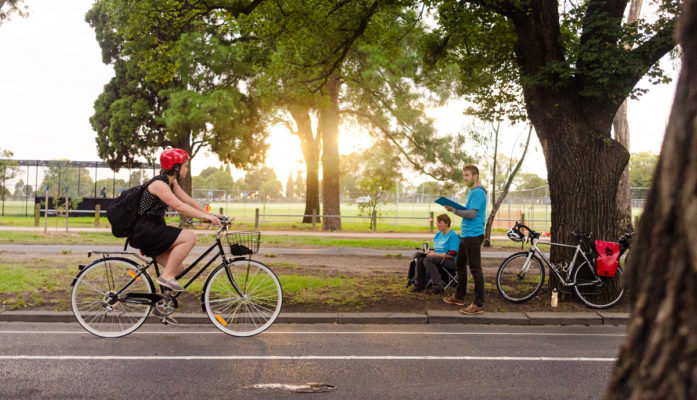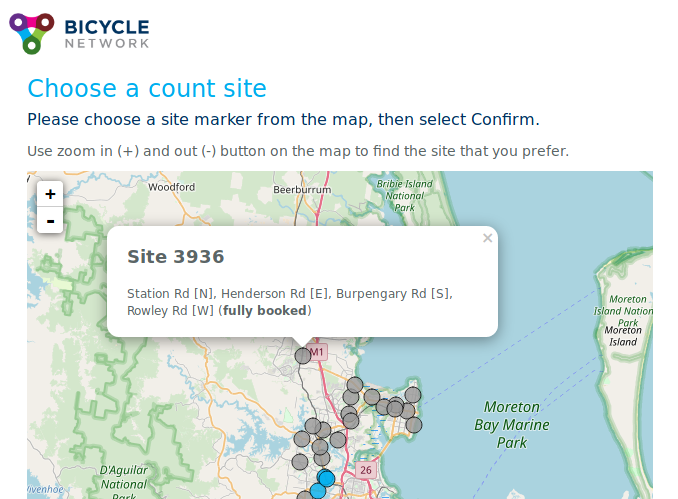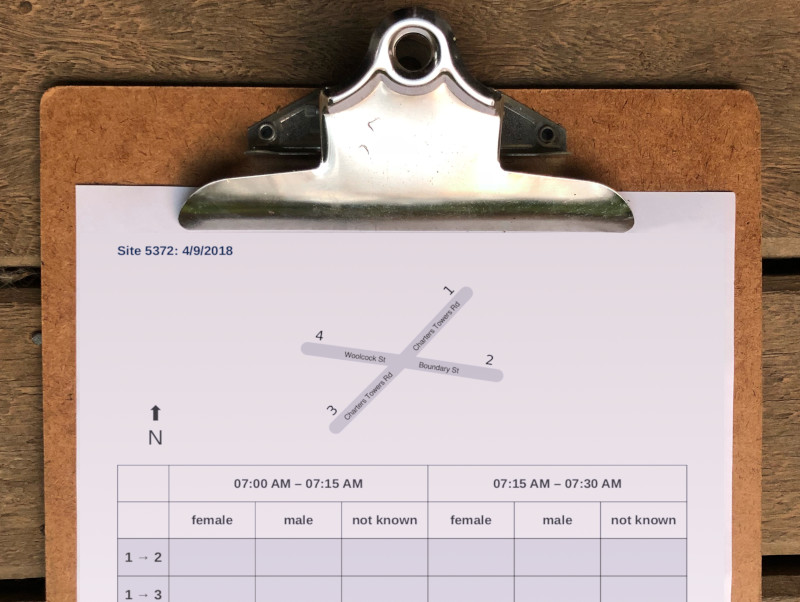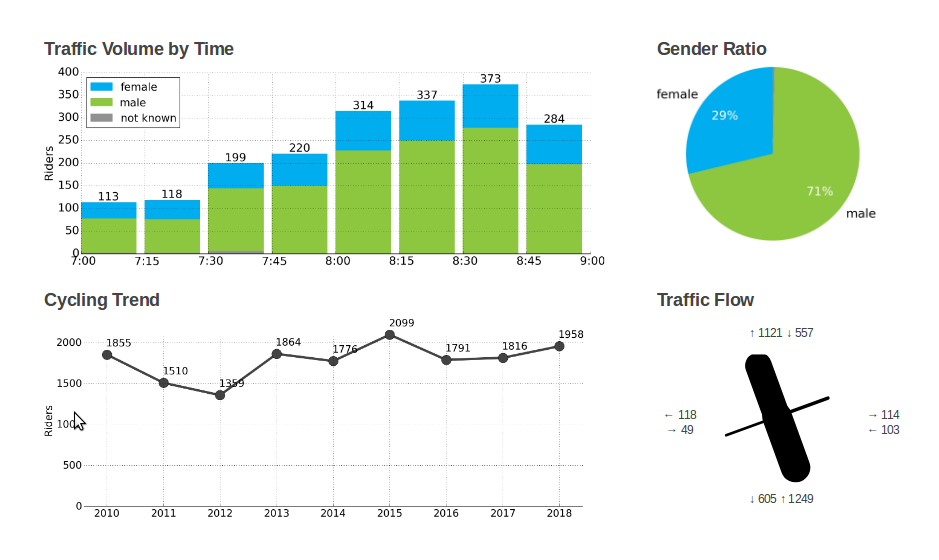 + Sturm
+ Sturm
“This scale of event simply wouldn't be possible without Sturm. This Super Tuesday, we've organised 1541 volunteer counters turning out from 7-9am at intersections all over Australia. We'll analyse their count data promptly and report back to the 42 local governments.”
— Jeff McPhan, Bike Futures Coordinator
Bicycle Network
Bicycle Network is Australia’s biggest bike riding organisation, supported by more than 50,000 members nationwide. Their goal is to make it easier for everyone, regardless of age, gender or background, to ride a bike.
>More than two thirds of Australians, including children, don’t get enough exercise. Bicycle Network's bike counts help local goverments to shape cities for bike riding and other healthy transport options.
“We believe that physical activity is vital for a happy and healthy life”, explained Jeff McPhan, Bike Futures Coordinator at Bicycle Network. “If we don’t get active, we put ourselves at serious risk of illnesses such as heart disease, some types of cancer, depression and type-2 diabetes. All you need to do is 30 minutes of activity each day to maintain your health. It’s not that much. Bike riding is cheap, fun, easy, convenient and healthy way to get around.”

Coordinating 1500 volunteers
As part of the Super Tuesday and Super Sunday events, McPhan personally coordinates thousands of volunteers. In each event, volunteers count commuter cyclists and active transport users at road and path intersections all over Australia. McPhan and Bicycle Network then analyse the resulting data and provide reports to local governments, who use the insights to for urban design, infrastructure planning and ensuring continuous improvement.
“In the beginning, we started out at a handful of key intersections in Melbourne. The events were organised by phone, email and a spreadsheet. Analysis and reports were produced entirely by hand, which was feasible for a few dozen sites. Demand really started to grow, because we were providing unique and valuable insights to councils. As our events crept up to several hundred volunteers, we really began to drown in the administrative side of the project. Communicating effectively with so many volunteers became an impossible task. And after each event, we'd waste months and months grinding out reports. It became hard to keep the quality up and delays were upsetting our councils.”

“Governments want healthy, happy citizens and safer, less-congested roads. Our counts give them the evidence to track their active transport improvements and spend their money to get the best outcomes.”

To help scale up the project, Sturm worked with Bicycle Network in three key areas:
1. Increasing capacity with self-service volunteer registration
Sturm provided a self-service registration process, allowing volunteers to choose a count site near where they live or work. The registration workflow collects all the information needed to run the event. A follow-up process ensures that the volunteer has received, read and accepted the job. This drastically reduces phone calls, emails and no-shows.
McPhan says, “The online registration system has increased our capacity ten-fold: from 150 to around 1,500 volunteers. We see hundreds of registrations in the first hour after registrations open, all seamlessly and without us lifting a finger. I'm freed up to spend more time building relationships with new councils and searching for more volunteers.”

2. Improving data quality with custom count sheets
Sturm automated the production of unique tally sheets for each count site. These sheets guide the volunteer to the location, orient themselves correctly and then collect data quickly. This allows the volunteer to work more independently, avoid mistakes and to collect additional data on gender and time.
“Volunteers need to collect high-quality data, including gender, time and directional flow”, said McPhan. “The proportion of women riding correlates closely with the safety of a particular route, which is of particular value to our councils. The data is also broken down into 15-minute blocks to track the morning peak at various locations. It's a very challenging task and we need to do everything we can to help our volunteers do it quickly and accurately.”

3. Cutting costs with beautiful automated reporting
Sturm built automated report generation that cut the post-event reporting work from months to days.
“Our end customers are the more than 60 local councils we supply reports to each year," said McPhan. "The automated reports are a game-changer for us. The councils are happy because they get high quality insights promptly after the event. We're happy because we save months of work. It's also a better and more consistent product."